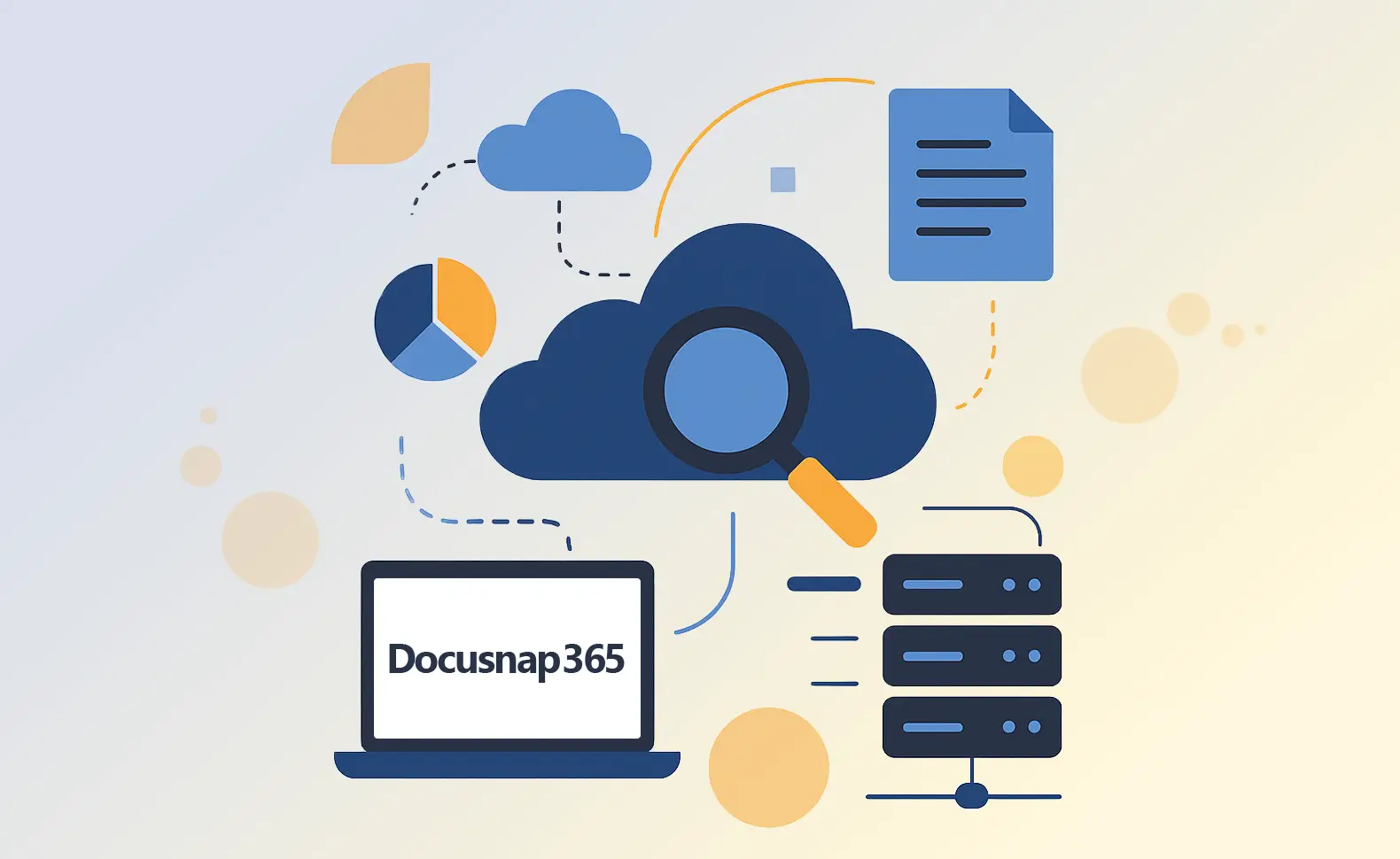The most important thing in brief:
- Improve network security: An IP scanner recognizes all devices active on the network, helps to identify unknown or unauthorized devices and thus contributes to network security.
- Efficient network management: Automatic monitoring by the IP scanner gives administrators complete overview and control of network resources, which reduces administrative costs.
- Use of professional software: Solutions such as Docusnap provide comprehensive network documentation and make it easier to identify security gaps and optimization potential.

In an increasingly connected world, where companies and organizations rely on complex networks on a daily basis, monitoring and managing these networks plays a central role. An important part of network security and management is the IP scanner, also known as IPscanner or network scanner. In this blog article, we explain how an IP scanner works, why it is essential, and the benefits of using professional software such as Docusnap when it comes to comprehensive network monitoring and documentation.
What is an IP scanner?
An IP scanner is a tool that checks networks for active IP addresses and provides detailed information about the devices found. With a IPScan administrators can discover, monitor, and manage all connected devices on a network. This is particularly useful for getting a complete overview of the network, identifying unknown or unauthorized devices, and identifying potential security vulnerabilities.
How does an IP scanner work?
An IP scanner searches the network by sending requests to a range of IP addresses and identifying the devices that respond to those requests. It uses various techniques to recognize different types of devices such as servers, workstations, printers, and other network devices. A typical scan process is as follows:
- Define IP range: The administrator determines the IP range that the scanner should check, such as the entire area of the internal network.
- Send inquiries: The network scanner sends requests to the individual IP addresses and waits for a response.
- Detect devices: Each device that responds to the request is identified and added to a list. Details such as IP address, MAC address, operating system and open ports are collected.
- Analyze results: The collected data is analyzed to determine which devices are on the network and how they are connected to each other.
Why is an IP scanner necessary?
The need for an IP scanner results from the complexity of modern networks. Businesses work with a wide range of devices, including servers, computers, smartphones, printers, routers, and IoT devices. Without an effective way to monitor all of these devices, security risks can arise. Here are some of the key reasons why a network scanner is essential to:
- network security: An IP scanner helps identify unknown or unauthorized devices on the network. These devices could pose potential vulnerabilities that could be exploited by attackers.
- network documentation: An IP scanner provides a complete overview of all devices connected to the network. This is critical for network documentation and management to know which devices exist and how they interact with each other.
- troubleshooting: If there is a problem with the network, a IP scan quickly provide information about which devices are affected and where the problem lies.
- resource management: Through regular IPScans administrators can monitor which devices and services are active and identify unnecessary devices or services that unnecessarily load the network.
The benefits of Docusnap for network scanning
While many IP scanners offer basic device recognition functions, Docusnap goes one step further and offers comprehensive network documentation and monitoring functions. Here are some of the benefits of Docusnap compared to traditional IP scanners:
- Comprehensive network discovery: Docusnap not only collects IP addresses, but also comprehensive information about network devices, services, operating systems, and even software installations. This depth of discovery provides a holistic view of the network.
- Automated documentation: A highlight of Docusnap is the ability to automatically and regularly scan the network and record the results in well-structured documentation. This is particularly important for compliance requirements and for audits.
- Network topology visualization: Docusnap visualizes the network topology so administrators can see at a glance how the devices on the network are connected to each other. This makes planning and managing the network much easier.
- Safety-related analyses: Docusnap goes beyond simply detecting devices and also provides security features such as identifying vulnerabilities, open ports, and other potential risks.
- Integrated solutions: Docusnap can be easily integrated with existing IT systems to enable seamless monitoring and management. It is versatile and supports various protocols and technologies.
Conclusion
An IP scanner is an essential tool for efficiently managing networks, detecting unauthorized devices, and ensuring network security. While conventional IPscanner offering basic functions, a comprehensive solution such as Docusnap not only enables detailed device recognition, but also complete network documentation and monitoring. By automating and visualizing complex networks, Docusnap provides invaluable added value for administrators who need a secure and well-documented IT infrastructure.
Try Docusnap now for 30 days! In this way, discover the benefits of network monitoring and documentation directly in your IT environment.



